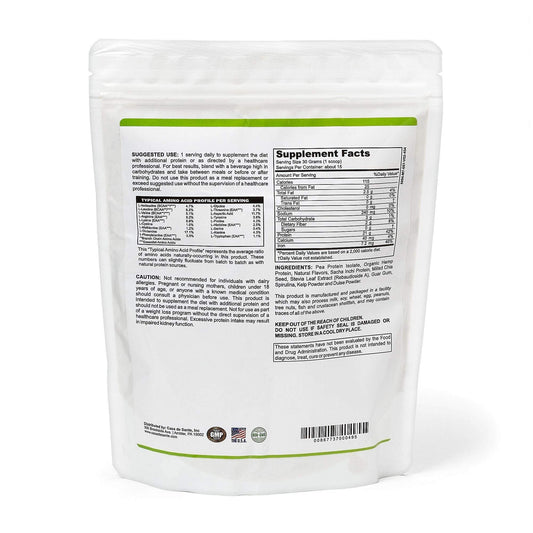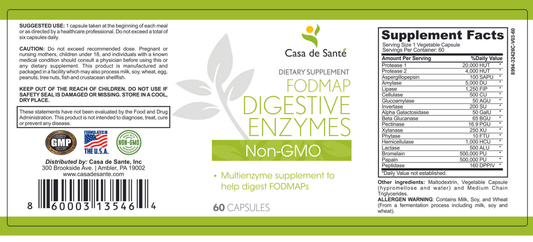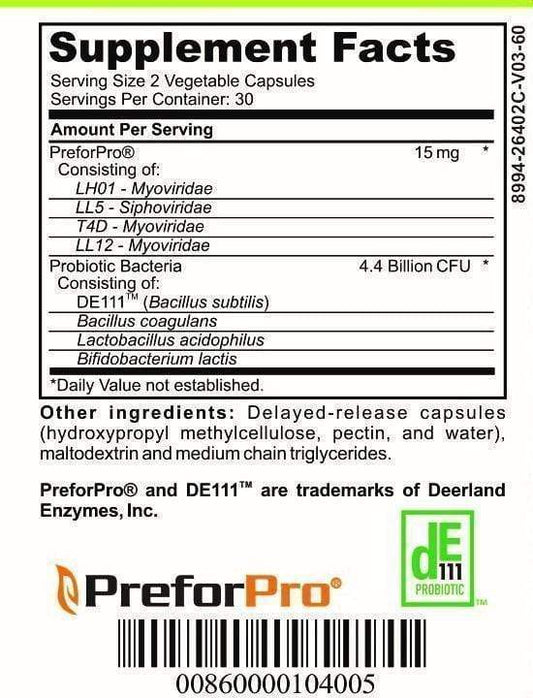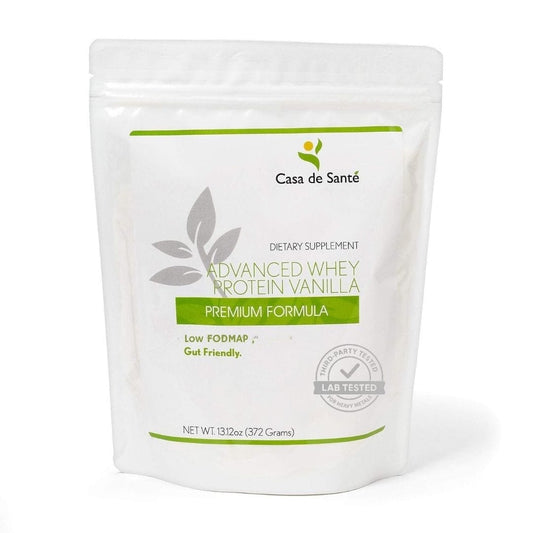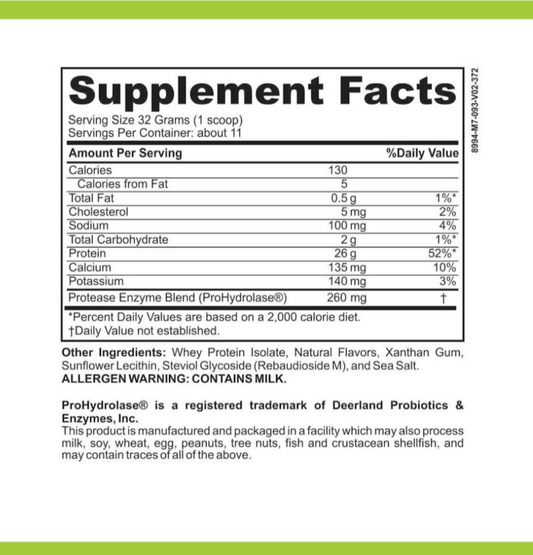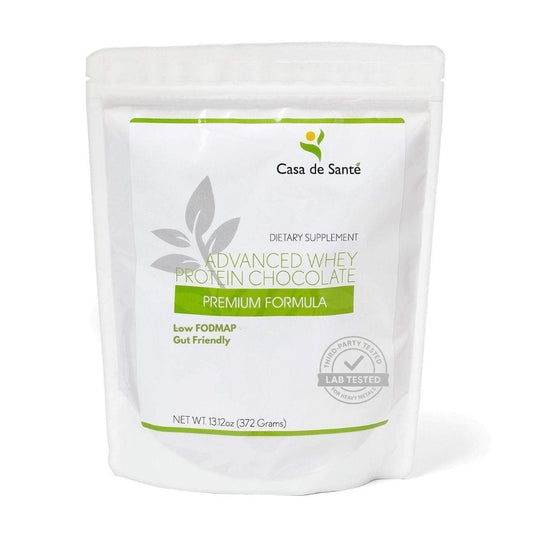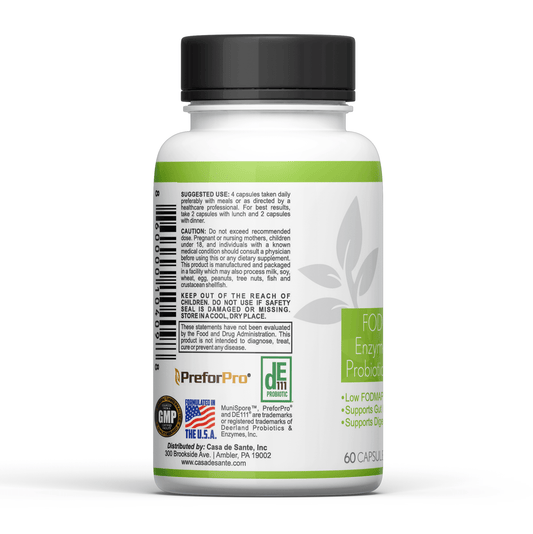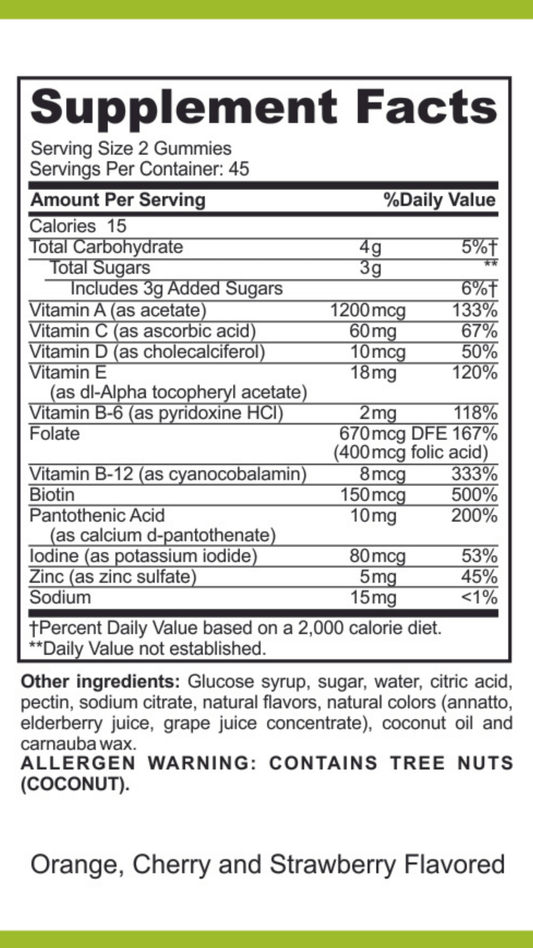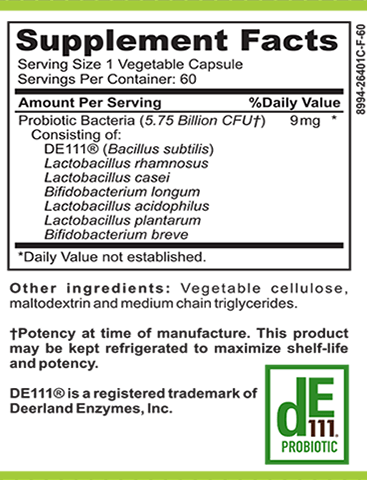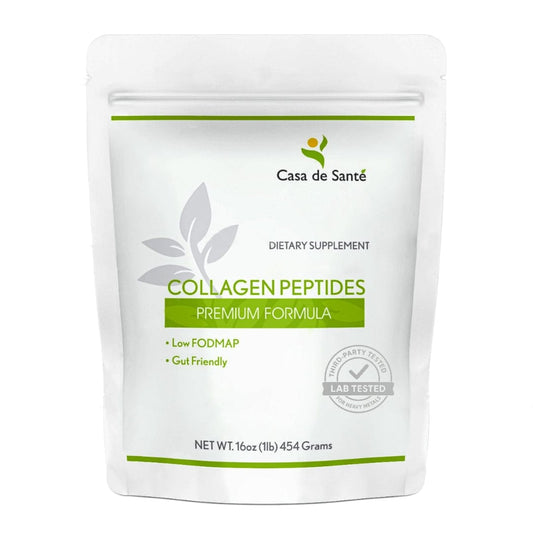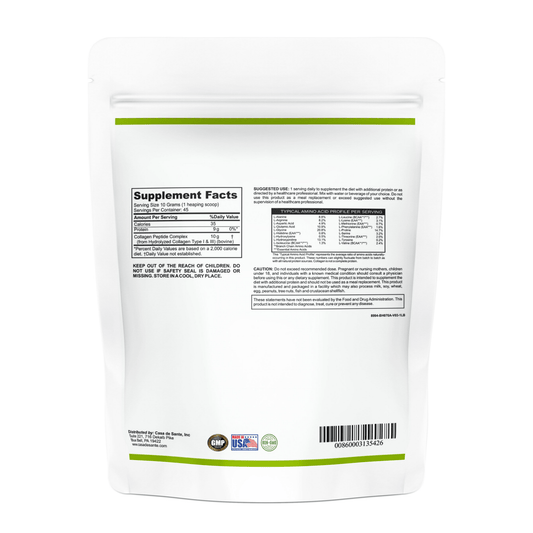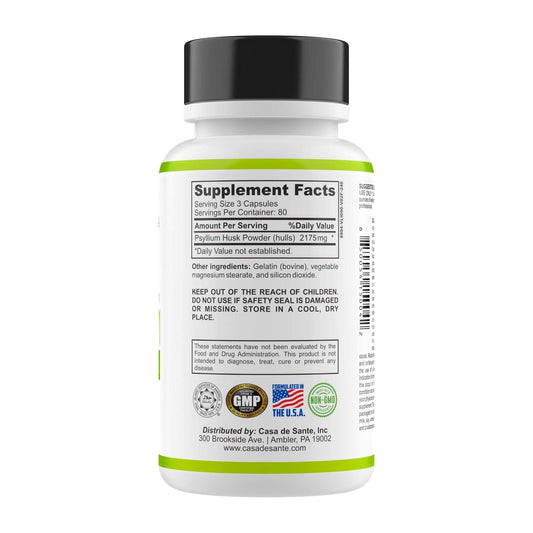Microbial Organic Acids (MOAT) By Mosaic Diagnostics vs Calprotectin By Diagnostic Solutions
Microbial Organic Acids (MOAT) By Mosaic Diagnostics vs Calprotectin By Diagnostic Solutions
In the realm of diagnostics, there are various tools and technologies that aid in the identification and management of health conditions. Two such diagnostic approaches are Microbial Organic Acids (MOAT) by Mosaic Diagnostics and Calprotectin by Diagnostic Solutions. While both methods are valuable in their own right, it is essential to understand the basics and nuances of each to make informed decisions. In this article, we will delve into the intricacies of MOAT and Calprotectin, compare their methodologies, accuracy, speed, efficiency, and cost-effectiveness, and explore their clinical implications and applications.
Understanding the Basics of Microbial Organic Acids (MOAT)
Microbial Organic Acids (MOAT) is an innovative diagnostic tool that provides valuable insights into the metabolic activities of gut microbes. By analyzing the organic acid profiles present in an individual's urine sample, MOAT offers a comprehensive assessment of microbial imbalances and their potential impact on overall health.
The gut microbiome, consisting of trillions of microorganisms, plays a crucial role in maintaining our health. These microorganisms interact with our bodies in various ways, and their metabolic activities can have a profound impact on our well-being. MOAT focuses on measuring organic acids, which are metabolites produced by microbial activity in the gut. These organic acids provide valuable information about the functioning of the gut microbiome and its interaction with the human body.
What is MOAT?
MOAT, as the name suggests, focuses on measuring organic acids that are metabolites produced by microbial activity in the gut. These organic acids provide valuable information about the functioning of the gut microbiome and its interaction with the human body.
Organic acids are compounds that are produced during microbial fermentation of dietary components, such as carbohydrates and fiber. They are excreted in the urine and can be measured to assess the metabolic activity of gut microbes. MOAT analyzes the levels of various organic acids in an individual's urine sample to gain insights into the composition and function of the gut microbiome.
The Role of MOAT in Diagnostics
Understanding the role of MOAT in diagnostics is crucial. By identifying specific patterns of organic acids, MOAT can help healthcare professionals identify imbalances in gut microbial populations, assess the efficiency of nutrient absorption, and detect potential microbial dysbiosis.
Imbalances in gut microbial populations, known as dysbiosis, can have a significant impact on our health. Dysbiosis has been linked to various health conditions, including inflammatory bowel disease, obesity, and metabolic disorders. By analyzing the organic acid profiles, MOAT can provide valuable information about the presence of dysbiosis and its potential impact on overall health.
In addition to identifying imbalances, MOAT can also assess the efficiency of nutrient absorption. The gut microbiome plays a crucial role in breaking down and absorbing nutrients from our diet. If there are issues with nutrient absorption, it can lead to deficiencies and other health problems. MOAT can provide insights into the efficiency of this process by analyzing the levels of specific organic acids.
Furthermore, MOAT can help healthcare professionals detect potential microbial dysbiosis, which refers to an imbalance in the composition of the gut microbiome. This imbalance can occur due to various factors, including diet, medications, and lifestyle choices. By identifying patterns of organic acids associated with dysbiosis, MOAT can assist in developing targeted interventions to restore balance and improve overall health.
Mosaic Diagnostics' Approach to MOAT
Mosaic Diagnostics has developed a cutting-edge approach to MOAT that combines advanced analytical techniques with comprehensive data interpretation. Their method allows for highly accurate and reliable results, enabling healthcare professionals to make informed decisions based on the insights provided by MOAT.
Mosaic Diagnostics' approach to MOAT involves state-of-the-art laboratory techniques to analyze the organic acid profiles in urine samples. These techniques ensure high sensitivity and specificity, allowing for accurate measurements of various organic acids. The data obtained from the analysis is then carefully interpreted by a team of experts who specialize in gut microbiome research and diagnostics.
The comprehensive data interpretation provided by Mosaic Diagnostics allows healthcare professionals to gain a deeper understanding of the results obtained from MOAT. This includes identifying specific patterns of organic acids associated with microbial imbalances, nutrient absorption issues, and potential dysbiosis. Armed with this information, healthcare professionals can develop personalized treatment plans and interventions to optimize gut health and improve overall well-being.
Delving into Calprotectin and its Diagnostic Uses
Calprotectin is another diagnostic tool that has gained significant recognition in recent years. By measuring the levels of calprotectin in a patient's stool sample, healthcare professionals can gain valuable information about intestinal inflammation and monitor the effectiveness of treatment in certain gastrointestinal conditions.
An Overview of Calprotectin
Calprotectin is a protein found in abundance in neutrophils, a type of white blood cell. When inflammation occurs in the intestinal tract, the levels of calprotectin increase and can be detected in stool samples. This makes calprotectin a useful marker for assessing intestinal inflammation.
Neutrophils are an essential part of the immune system and are primarily responsible for fighting off bacterial infections. When inflammation occurs in the intestinal tract, neutrophils migrate to the site of inflammation and release calprotectin as part of their immune response. This release of calprotectin into the stool allows for its detection and measurement.
The discovery of calprotectin as a diagnostic tool has revolutionized the field of gastroenterology. Previously, diagnosing and monitoring intestinal inflammation relied heavily on invasive procedures such as colonoscopies. The availability of a non-invasive test like the calprotectin test has greatly improved patient comfort and convenience.
The Importance of Calprotectin in Diagnostics
Calprotectin plays a crucial role in diagnostics as it enables healthcare professionals to distinguish between inflammatory bowel diseases (such as Crohn's disease and ulcerative colitis) and functional bowel disorders (such as irritable bowel syndrome). Accurate diagnosis can lead to more targeted treatment plans and improved patient outcomes.
One of the key advantages of using calprotectin as a diagnostic marker is its high specificity for intestinal inflammation. This means that elevated levels of calprotectin in the stool are highly indicative of active inflammation in the intestines. By measuring calprotectin levels, healthcare professionals can differentiate between patients with inflammatory bowel diseases who require more aggressive treatment and those with functional bowel disorders who may benefit from symptom management strategies.
Furthermore, calprotectin levels can also be used to monitor the effectiveness of treatment in patients with inflammatory bowel diseases. A decrease in calprotectin levels over time indicates a positive response to treatment, while persistently high levels may suggest the need for adjustment or exploration of alternative treatment options.
Diagnostic Solutions' Calprotectin Test
Diagnostic Solutions offers a reliable and efficient calprotectin test that allows healthcare professionals to accurately measure the levels of calprotectin in stool samples. Their test has been validated and widely adopted, making it a valuable tool in the diagnostic arsenal.
The calprotectin test provided by Diagnostic Solutions utilizes advanced immunoassay technology to detect and quantify calprotectin levels in stool samples. This technology ensures accurate and precise results, allowing healthcare professionals to make informed decisions regarding patient care.
Additionally, the calprotectin test offered by Diagnostic Solutions is user-friendly and time-efficient. The test kit includes all the necessary components and instructions for sample collection and processing, minimizing the risk of errors and ensuring reliable results. The quick turnaround time for test results allows healthcare professionals to promptly assess and manage patients' conditions.
In conclusion, calprotectin is a valuable diagnostic tool that provides crucial information about intestinal inflammation and aids in the diagnosis and monitoring of various gastrointestinal conditions. The availability of reliable tests, such as the calprotectin test offered by Diagnostic Solutions, has significantly improved patient care and outcomes in the field of gastroenterology.
Comparing MOAT by Mosaic Diagnostics and Calprotectin by Diagnostic Solutions
While both MOAT and calprotectin are valuable diagnostic tools, it is essential to compare their methodologies, accuracy, speed, efficiency, and cost-effectiveness to determine their suitability for specific clinical scenarios.
Methodology Comparison
MOAT relies on analyzing organic acid profiles in urine samples, providing insights into gut microbial activities. This method involves the identification and quantification of specific organic acids present in the urine, which can indicate imbalances in the gut microbiome. On the other hand, calprotectin requires the measurement of the protein in stool samples to assess intestinal inflammation. By measuring the levels of calprotectin, a protein released by white blood cells in the intestines, this diagnostic tool can help detect and monitor inflammatory bowel diseases. Understanding the differences in these methodologies helps healthcare professionals choose the most appropriate diagnostic approach for their patients.
By analyzing organic acid profiles in urine, MOAT offers a non-invasive and convenient testing option. The collection of urine samples is relatively simple and does not require any special preparation or dietary restrictions. In contrast, calprotectin testing involves the collection of stool samples, which can be more challenging for some patients. It may require specific instructions for sample collection and proper storage to ensure accurate results.
Accuracy and Precision
Both MOAT and calprotectin offer high accuracy in their respective diagnostic capabilities. MOAT's ability to identify microbial imbalances in the gut provides valuable insights into the overall health of the digestive system. By detecting specific organic acid patterns, MOAT can help healthcare professionals identify potential issues such as dysbiosis or overgrowth of certain microbial species.
On the other hand, calprotectin's proficiency in distinguishing between inflammatory bowel diseases (IBD) and functional bowel disorders (FBD) makes it a reliable tool in clinical practice. Elevated levels of calprotectin in stool samples are indicative of intestinal inflammation, which is commonly seen in conditions like Crohn's disease and ulcerative colitis. By accurately differentiating between IBD and FBD, calprotectin testing helps guide appropriate treatment strategies for patients.
Speed and Efficiency of Results
When it comes to speed and efficiency of results, MOAT stands out due to its urine-based testing. The analysis of organic acid profiles in urine samples can be performed relatively quickly, and the results are often available within a short turnaround time. This makes MOAT a suitable option for situations where prompt diagnosis is crucial.
Calprotectin testing, although slightly more time-consuming due to the need for stool sample analysis, provides prompt and informative results for healthcare professionals. The analysis involves the extraction and measurement of calprotectin levels, which can be completed within a reasonable timeframe. While it may take longer compared to MOAT, the results of calprotectin testing can still be obtained within a clinically relevant timeframe.
Cost-effectiveness Analysis
An essential aspect of any diagnostic tool is its cost-effectiveness. MOAT and calprotectin both offer value in their diagnostic capabilities, but cost considerations may vary depending on factors such as laboratory requirements and specific patient needs.
MOAT's urine-based testing may have advantages in terms of cost-effectiveness. Urine sample collection is a relatively simple and inexpensive process, and the analysis of organic acid profiles can be performed using standardized laboratory techniques. However, it is important to consider the overall cost, including laboratory fees and any additional tests or consultations that may be required based on the results.
Calprotectin testing, although requiring stool sample collection, can still be a cost-effective option considering its ability to differentiate between IBD and FBD. By accurately identifying intestinal inflammation, calprotectin testing can help avoid unnecessary procedures or treatments, potentially reducing overall healthcare costs.
Healthcare professionals must evaluate the cost-effectiveness of each tool based on their resources and clinical scenarios. Factors such as the availability of specialized laboratories, patient preferences, and the specific diagnostic needs of each case should be taken into account when considering the cost-effectiveness of MOAT and calprotectin.
Clinical Implications and Applications
Understanding the clinical implications and applications of MOAT and calprotectin is crucial for maximizing their impact on patient care.
MOAT in Clinical Practice
With its ability to identify microbial imbalances and assess nutrient absorption efficiency, MOAT has the potential to guide personalized interventions and dietary recommendations to restore gut microbiome health. It can be particularly useful in cases of chronic gastrointestinal symptoms or suspected microbial dysbiosis.
Calprotectin in Clinical Practice
Calprotectin's utility lies in its ability to differentiate between inflammatory bowel diseases and functional bowel disorders. This can aid healthcare professionals in determining the most appropriate treatment plans and timely interventions, thus improving patient outcomes.
In conclusion, both Microbial Organic Acids (MOAT) by Mosaic Diagnostics and Calprotectin by Diagnostic Solutions offer valuable insights into the intricate complexities of the human body. By understanding their basics, comparing their methodologies, accuracy, speed, efficiency, and cost-effectiveness, and exploring their clinical implications and applications, healthcare professionals can make informed decisions about which diagnostic tool is most suitable for their specific clinical scenarios. The continuous advancements in diagnostic technologies ensure that healthcare professionals have a wide array of tools at their disposal to provide optimal patient care.


